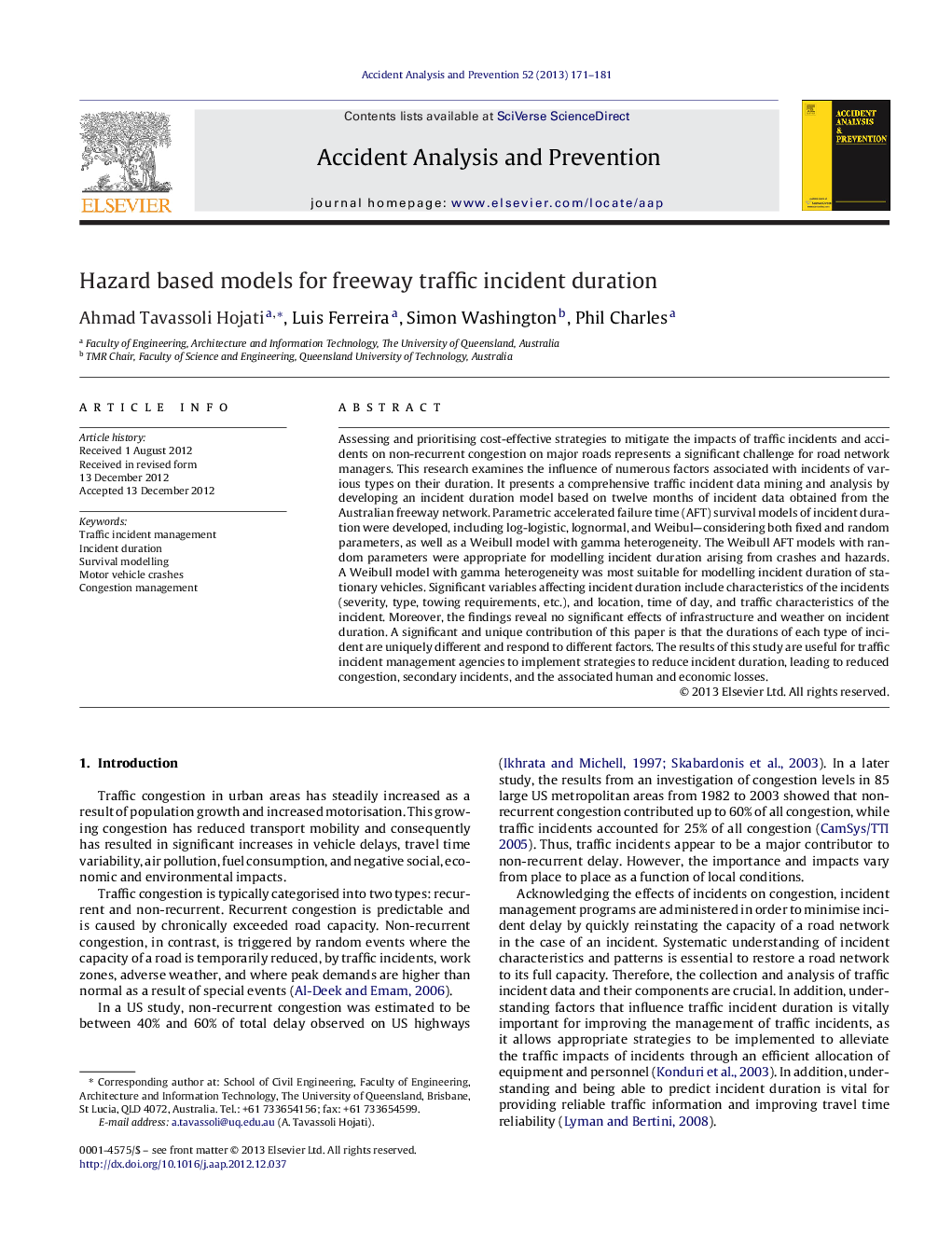| Article ID | Journal | Published Year | Pages | File Type |
|---|---|---|---|---|
| 572556 | Accident Analysis & Prevention | 2013 | 11 Pages |
Assessing and prioritising cost-effective strategies to mitigate the impacts of traffic incidents and accidents on non-recurrent congestion on major roads represents a significant challenge for road network managers. This research examines the influence of numerous factors associated with incidents of various types on their duration. It presents a comprehensive traffic incident data mining and analysis by developing an incident duration model based on twelve months of incident data obtained from the Australian freeway network. Parametric accelerated failure time (AFT) survival models of incident duration were developed, including log-logistic, lognormal, and Weibul—considering both fixed and random parameters, as well as a Weibull model with gamma heterogeneity. The Weibull AFT models with random parameters were appropriate for modelling incident duration arising from crashes and hazards. A Weibull model with gamma heterogeneity was most suitable for modelling incident duration of stationary vehicles. Significant variables affecting incident duration include characteristics of the incidents (severity, type, towing requirements, etc.), and location, time of day, and traffic characteristics of the incident. Moreover, the findings reveal no significant effects of infrastructure and weather on incident duration. A significant and unique contribution of this paper is that the durations of each type of incident are uniquely different and respond to different factors. The results of this study are useful for traffic incident management agencies to implement strategies to reduce incident duration, leading to reduced congestion, secondary incidents, and the associated human and economic losses.
► Demonstrates the needs to separately model each type of incident and accident. ► Identifies significant variables affecting the duration of incidents and accidents. ► Provides predictive models of incident duration using accelerated failure time model. ► Considers a number of random parameter models to examine the homogeneity assumption.
